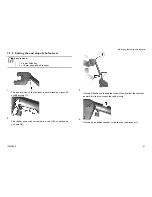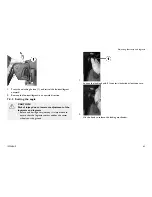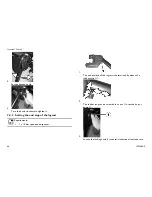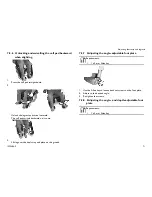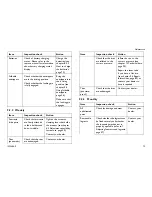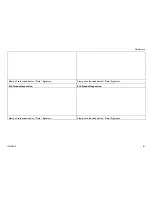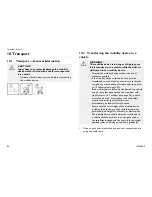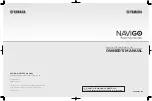
Electrical system
•
Do not charge your batteries under extreme temperatures.
High temperatures above 30 °C are not recommended for
charging as well as low temperatures below 10 °C.
•
Use only charging devices in Class 2. This class of chargers may
be left unattended during charging. All charging devices which
are supplied by Invacare comply with these requirements.
•
You cannot overcharge the batteries when using the charger
supplied with your vehicle, or a charger that has been approved
by Invacare.
•
Protect your charger from sources of heat such as heaters
and direct sunlight. If the battery charger overheats, charging
current will be reduced and the charging process delayed.
8.2.3
How to charge the batteries
Refer to the user manuals for your remote and battery charger for
the position of the charging socket and further information about
charging the batteries.
WARNING!
Risk of explosion and destruction of batteries if
the wrong battery charger is used
–
Only ever use the battery charger supplied with your
vehicle, or a charger that has been approved by
Invacare.
Risk of electric shock and damage to the battery
charger if it gets wet
–
Protect the battery charger from water.
–
Always charge in a dry environment.
Risk of short circuit and electric shock if the
battery charger has been damaged
–
Do not use the battery charger if it has been dropped
or damaged.
Risk of electric shock and damage to the batteries
–
NEVER attempt to recharge the batteries by attaching
cables directly to the battery terminals.
Risk of fire and electric shock if a damaged
extension cable is used
–
Only ever use an extension cable if it is absolutely
necessary. In case you must use one, make sure it
is in good condition.
Risk of injury if using the mobility device during
charging
–
DO NOT attempt to recharge the batteries and
operate the mobility device at the same time.
–
DO NOT sit in the mobility device while charging the
batteries.
1529686-P
75

